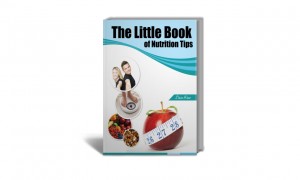Unfortunately we live in a toxic world; there have been thousands of tons of chemicals released into our environment including heavy metals, plastics, pesticides, industrial chemicals, dioxins, phthalates, and xenoestrogens. One hundred percent of new born babies that have been tested have shown positive for traces of rocket fuel, dioxins, DDT and other chemicals in their umbilical cords. Rates of cancer are on the rise with many cancers being attributed to chemical toxicity.
Detoxification is a body wide process involving the skin, kidneys, lungs and liver. Most of this work is carried out by the liver and the liver and bowel work closely to clean and detoxify your body. Once the gut is healed, the liver needs to be supported to do its job of getting rid of all these chemicals we are exposed to.
Overview of the liver’s function
The liver is the largest internal organ in the human body and it is often the most overworked. It weighs approximately 1.4kg and filters about 1.5 litres of blood every minute. The liver has five primary roles in maintaining health:
- Digestion
- Blood filtration
- Detoxification
- Cholesterol synthesis
- Metabolism
The liver and bowel are integral to the process of detoxifying toxic compounds. There are two enzymatic pathways of detoxification in the liver – phase 1 or the P450 pathway and the phase 2 pathways.
The phase 1 pathway is a set of enzymes that reside inside the liver cells. As blood is filtered through the liver cells these enzymes chemically transform compounds to a less toxic form, making them water-soluble, or converting them into a more toxic form. Making a toxin water-soluble allows it to be directly excreted by the kidneys, whereas the more toxic compounds are ready to be processed by the phase 2 enzymes.
Phase 1 enzymes require a host of nutrients, vitamins and minerals. For each molecule of a toxin metabolised it produces a free radical, thus there is a great demand for antioxidants as a by-product of phase 1 detoxification. The main antioxidant required for phase 1 detoxification is glutathione, which itself requires support from selenium and vitamin E.
The metabolites from phase 1 are then shunted through the 6 different pathways of phase 2 detoxification. Each phase 2 pathway works best at detoxifying certain chemicals, but there is considerable overlap in activity among the enzymes. During phase 2, toxins are attached or conjugated to certain nutrients and amino acids thus enabling the liver to turn drugs, hormones and various toxins into substances that can be excreted.
The six pathways include:
1. Glutathione conjugation accounts which accounts for approximately 60% of the phase 2 enzymatic activities. This is where toxins are bound to the antioxidant glutathione before being excreted by the kidneys.
2. Amino acid conjugation requires several amino acids including glycine, taurine, glutamine, arginine, and ornithine.
3. The sulphation pathway binds toxins to sulphurous compounds and clears the steroid hormones oestrogen, testosterone and thyroid hormones.
4. The glucuronidation pathway joins glucuronic acid to toxins.
5. Methylation involves conjugating methyl groups to toxins.
6. The Acetylation pathway joins toxins such as sulpha drugs to a molecule of acetyl-CoA.
One of the main routes of elimination for these processed toxins and hormones is through the bile. Gallstones prevent the liver eliminating bile and may be attributed to high fat, low fibre diets and alcohol consumption.
In the bowels the bile is bound up with dietary fibre and eliminated in the stool. Enzymes in the bowel called beta glucuronidase produced by unfriendly bacteria are capable of breaking the “old” or processed hormones and toxins from dietary fibre making them available to be reabsorbed or be “re-cycled” increasing toxicity.
Also consider that it is well known that alcohol and the pill depletes folic acid and, along with diuretic compounds such as caffeine or diuretic drugs, make you pass more urine. This increases the loss of water-soluble vitamins. It is also important to consider that alcohol, tannins in tea, phytates in grains and sugar also affect nutrient absorption in the gut.
To find out what foods and nutrients supper phase 1 and 2 detoxification in the liver, what foods stimulate bile flow and what foods and supplements support healthy gut bacteria and normal transit time Steve Hines Little book of nutrition tips now is available at 
http://www.amazon.co.uk/little-book-nutrition-tips/dp/0956670113
or watch Steve talk about the book on YouTube here
